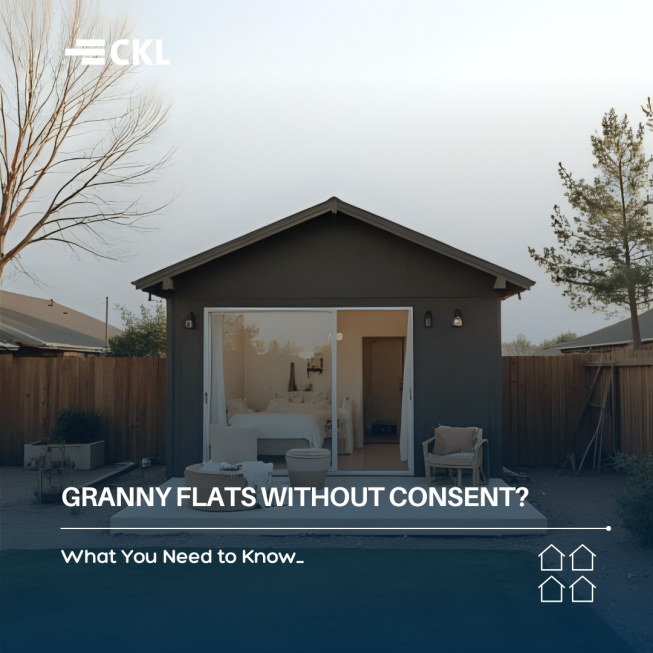You may have seen the recent headlines about “granny flats without consent.” It’s one of the Government’s latest moves to increase housing options and affordability, with new legislation set to make it easier for homeowners to add a small, self-contained dwelling to their property.
The Building and Construction (Small Stand-alone Dwellings) Amendment Bill passed into law last month, bringing changes to several key pieces of legislation, including the Building Act, Resource Management Act (RMA), and Local Government Act (LGA).
These changes are expected to come into effect in early 2026.
What’s changing
Under the new rules, building consent will no longer be required for new, detached, single-storey granny flats (or minor dwellings) that meet certain criteria:
- Up to 70 m² in size (including an integrated garage)
- Single-storey only – no mezzanine floors or lofts
- Maximum height of 4 m and floor level no more than 1 m above ground
- At least 2 m from any other structure or property boundary
- Must be designed and built by Licensed Building Practitioners (LBPs)
- Must still meet the New Zealand Building Code
What homeowners still need to do
While no formal building consent is required, there are still several obligations:
- Notify your local council before starting and again once the build is complete
- Pay development contributions, which councils are likely to charge at 0.5–0.8 of a Household Unit Equivalent (HUE)
- Note that some commentators have speculated there could be future rates increases if property values rise or local infrastructure faces additional demand, though this has not been confirmed by councils
The fine print
While the change aims to save time and money (estimated savings of around $4,500 on average), it won’t remove every barrier.
From a resource consent perspective, many granny flats were already permitted under existing district plans, particularly on rural sites or in urban areas covered by the Medium Density Residential Standards (MDRS).
However, consents may still be required in certain situations, such as:
- Natural hazard overlays (e.g. flooding or land instability)
- Servicing or access constraints
- Private covenants or easements restricting additional dwellings
- District Plan limits on density, height, site coverage, or earthworks
Talk to CKL
At CKL, we can help you navigate these upcoming changes and assess whether your site is suitable for a small stand-alone dwelling.
From planning and surveying through to engineering and environmental services, our team can advise on what’s possible and what to watch out for.
If you’re considering adding a granny flat or minor dwelling to your property, get in touch with CKL to make sure your plans stack up under the new rules.
Disclaimer: The information above is for general informational purposes only and should not be considered personal advice. For tailored guidance, please seek professional advice or contact your local council.





